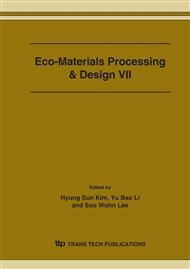p.846
p.850
p.854
p.858
p.862
p.866
p.870
p.874
p.878
Surface Modification of Glass Plate to Enhance Thickness of Silica Aerogel
Abstract:
Surface modification process was employed to enhance the thickness of film and avoid crack propagation during ambient drying for the smart glazing. To eliminate the hydrocarbon on the surface of glass, UV was irradiated on the glass slide under oxygen atmosphere. The wetting angle was reduced to the optimal condition for dip-coating when UV irradiation with oxygen time was kept for 10minutes. The thickness of the surface modification samples have almost double value compared to the sample of non-surface treatment. The thickness of the film after heat treatment of the substrate was highly increased.
Info:
Periodical:
Pages:
862-865
Citation:
Online since:
March 2006
Authors:
Price:
Сopyright:
© 2006 Trans Tech Publications Ltd. All Rights Reserved
Share:
Citation:


